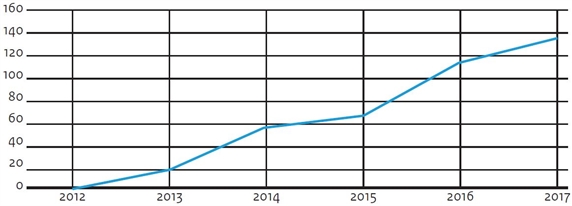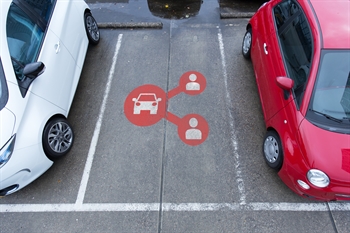Case study Car sharing in Wageningen
The municipality of Wageningen plays an active role in the roll-out of business-to-consumer shared cars. The car sharing policy is part of the Wageningen Municipal Mobility Plan (GMP). In 2012, it was already clear that there was support for car sharing in Wageningen.
Research has shown that car sharing results in a reduction in demand for parking because (second) car ownership decreases. It also emerges that the number of kilometres driven by car is decreasing because people are more critical about their use of cars.
The Project
The primary objective of the Municipal Mobility Plan (GMP) is to promote and achieve optimal accessibility to and within Wageningen. The municipality’s car sharing policy is linked to various policy areas:
- Within the GMP, the car sharing policy will be taken up in combination with the parking policy and the mobility management policy. Furthermore, more and more attention is being paid to its association with promoting bicycle use. For example, it may be desirable to combine parking spaces for shared cars with bicycle parking facilities.
- The municipality’s mobility policy is directly related to the climate policy as laid down in the Wageningen Climate Plan. This sets the objective of full climate neutrality in relation to mobility by 2050.
- In the context of its policy on sustainable construction, the municipality of Wageningen is asking project developers to take an extra step within the framework of various sustainability themes. Mobility is one of these.
Implementation
The municipality of Wageningen encourages business-to-consumer car sharing in various ways:
- Organisations that wish to use a shared car will receive full cooperation from the municipality. The municipality reserves a parking space in a public area and provides it with a corresponding sign. There are currently about 15 of these shared cars available within the municipal boundaries.
- The municipality of Wageningen is promoting the systematic inclusion of parking spaces for shared cars in new construction plans. Under the parking standard, one shared car parking space is considered equal to four regular parking spaces. In this way, project developers can save valuable parking space within their plans and give the space a different use.
- The municipality is currently conducting a feasibility study into the use of electric shared cars in commercial traffic and for private use outside regular working hours. The key question is whether this can contribute to a reduction in kilometres travelled by car that generate pollution. Seven major employers in Wageningen are directly involved in this study.
- Within the municipal organisation, employees are encouraged to use an electric shared car, which is also available to other non-commercial users.
Results
With a total of 150 shared cars, the municipality of Wageningen is in 5th place in terms of the number of shared cars per 100,000 inhabitants. More about the impact of this can be found in the Car Sharing fact sheet.

Source: Dashboard duurzame en slimme mobiliteit, CROW
Considerations for deployment elsewhere
Where other municipalities or organisations want to use shared cars, the following points for attention are important:
- Encouraging car sharing requires a tailor made approach. Whether car sharing will suit a particular project or neighbourhood depends, for example, on the composition of the local population and the actual parking demand. The large number of students in Wageningen, for example, makes car sharing even more interesting, due to the low number of car owners.
- Pay attention to the sharing of electric cars, so that sustainability will play a more prominent role in stimulating car sharing.
- It is important to establish a network with other organisations, such as employers in the municipality. By jointly laying a solid foundation for shared cars, an environment can be created in which the shared car truly emerges as a good alternative.

